1.修饰局部变量
1.1作用
ststic修饰局部变量,会改变局部变量的生命周期,不改变作用域:
生命周期:和全局变量一样具有全局性,但在内存中的位置没有改变,还在在静态存储区中。
作用域:作用域不改变。
注意:静态局部变量的初始化在整个变量定义时只会进行一次。
1.2举例
(1)不加static
#include <stdio.h>
Show()
{
int j = 0;
j++;
printf("j=%d\n", j);
}
int main()
{
int i = 0;
for (i = 0; i < 10; i++)
{
Show();
}
return 0;
}
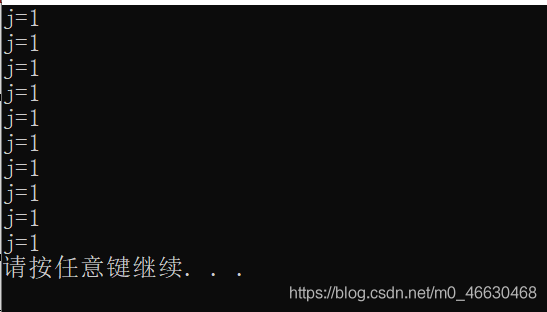
(2)加static
#include <stdio.h>
Show()
{
static int j = 0;//生命周期变为全局的,
j++;
printf("j=%d\n", j);
}
int main()
{
int i = 0;
for (i = 0; i < 10; i++)
{
Show();
}
return 0;
}
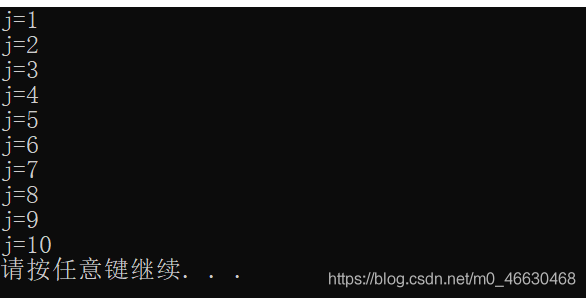
(3)静态局部变量的初始化只会进行一次
#include <stdio.h>
Show()
{
static int j = 0;
j = 3;
j++;
printf("j=%d\n", j);
}
int main()
{
int i = 0;
for (i = 0; i < 10; i++)
{
Show();
}
return 0;
}
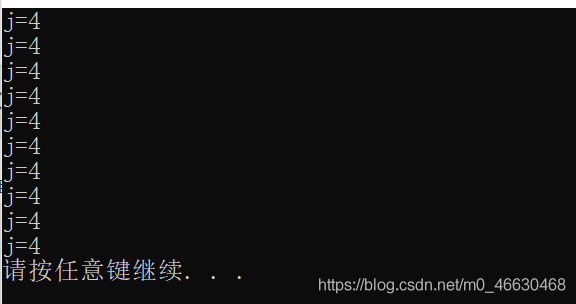
2.修饰全局变量
2.1作用
static修饰全局变量,表示全局变量只在本文件内有效,取消了全局变量的跨文件属性。
2.2举例
由于static对全局变量的作用在一个文件里体现不出来,固我们创建两个文件,
在test1.c中通过extern引用外部变量g_vale,在test2.c中创建全局变量g_vale 。
(1)不加static
test1.c:
#include <stdio.h>
extern int g_vale;
int main()
{
printf("g_vale=%d\n", g_vale);
return 0;
}
test2.c:
#include <stdio.h> int g_vale = 100;//定义全局变量
编译运行:
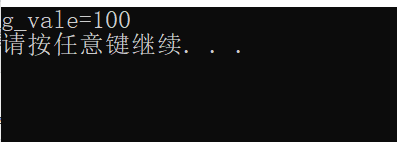
(2)加static
test1.c
#include <stdio.h>
extern int g_vale;
int main()
{
printf("g_vale=%d\n", g_vale);
return 0;
}
test2.c
#include <stdio.h> static int g_vale = 100; //定义静态全局变量
编译运行:运行失败,无法解析外部符号g_vale

3.修饰函数
3.1作用
static修饰函数,和其修饰全局变量类似,表示函数只可在本文件内调用使用,取消了函数的跨文件属性。
3.2举例
由于static对函数的作用在一个文件里体现不出来,固我们创建两个文件,
在test1.c中通过extern引用外部函数Show( ),在test2.c中创建Show( )函数
(1)不加static
test1.c:
#include <stdio.h>
extern Show();//也可以不写声明,文件在链接时也可以找到,但会出现Warning:Show()未定义
int main()
{
Show();
system("pause");
return 0;
}
test2.c:
#include <stdio.h>
void Show()
{
printf("This is Show()\n");
}
编译运行:
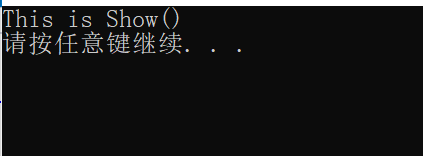
(2)加static
test1.c:
#include <stdio.h>
extern Show();
int main()
{
Show();
system("pause");
return 0;
}
test2.c:
#include <stdio.h>
static void Show()
{
printf("This is Show()\n");
}
编译运行:运行失败,无法解析外部符号Show

以上就是C语言入门篇--关键字static详解的详细内容,更多关于C语言关键字static详解的资料请关注自学编程网其它相关文章!

- 本文固定链接: https://zxbcw.cn/post/220908/
- 转载请注明:必须在正文中标注并保留原文链接
- QQ群: PHP高手阵营官方总群(344148542)
- QQ群: Yii2.0开发(304864863)
